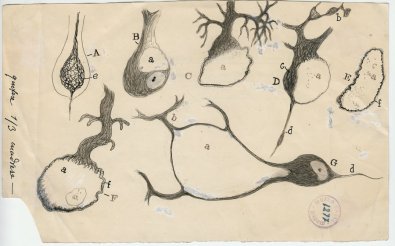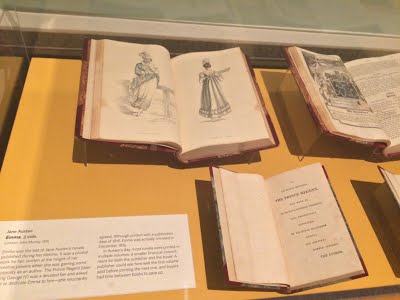Are you not sure that you understood the subtext of Austen’s Pride and Prejudice? Are you bored while waiting for Game of Thrones to return? Have you always thought Austen’s work would be greatly improved by more explosions? Well, my friends, Hollywood has finally made a movie just for you.
Pride and Prejudice and Zombies, a film most prominently starring Lily James’ heaving bosom, is actually quite fun, though decidedly not well made.
The film, based on Seth Grahame-Green’s 2009 novel-zombie mash-up of the same title, has a promising enough start, and seems to fully embrace its gimmicky premise. After a comic book-esque introduction to the movie’s backstory, in which we learn about the spread of zombies throughout England, we are quickly introduced to the movie’s principle players. Mr. Darcy, now an amalgamation of both Austen’s original Mr. Darcy and his cousin, Colonel Fitzwilliam, travels around the countryside, quashing recent zombie outbreaks, carrying with him a vial of zombie-detecting carrion flies. Meanwhile, the Bennet sisters are sitting comfortably at home, polishing their weapons and twittering about Netherfield Hall. The early tension between Mr. and Mrs. Bennet is used to neatly explain the conditions of this new world, one in which Mr. Bennet (played by Game of Thrones actor Charles Dance) is more interested in his daughters’ immediate survival against the undead horde than he is in making sure their long-term marital futures are secured.
From there, the movie progresses rapidly, faithfully attempting to follow Austen’s basic plot. Darcy is haughty and offensive, while our beloved Lizzy is headstrong and sharp-witted. Mr. Bingley, this time played as a dim-witted doofus, is immediately smitten with Jane. Caroline Bingley is awful, and Lydia is eye-roll inducing. Class prejudices are still overtly present, but in this world, they are creatively manifested by what country one studied the arts of zombie-slaying in: highly fashionable Japan or less fashionable but more useful China. The first half of the movie leans into its campiness and delivers some excellent one-liners. A personal favorite: Lizzy slams Mr. Darcy (and company) for not having read Sun Tzu’s The Art of War in the original Chinese. Oooo, BURN!
Much of the film’s comedy derives from rendering Austen’s nuanced and satiric subtext overtly explicit. Darcy rolls his eyes at Mrs. Bennet right along with us, and well-placed looks of exasperation tell us exactly how to interpret what we see on screen. The high point by far is Matt Smith’s rendition of Mr. Collins, and, quite frankly, Smith steals the show. From his thwarted proposals to the elder Bennet sisters, and his completely oblivious social awkwardness at Lady Catherine’s, he is both riotously funny and remarkably faithful to the slimy Mr. Collins Austen created.
The movie really goes sideways, however, with the entrance of Mr. Wickham, and it is with his story that all pretense of following the source material gets abandoned. We discover that not only is Wickham a manipulative liar, but he also is an advocate for zombie rights. Yes, you read that correctly – much of Wickham’s role is convincing Lizzy, Lady Catherine (played by the always wonderful Lena Heady), and by extension the British government, that, as long as zombies only eat pig brains, they remain rational human beings and therefore should not be killed. Quite the twist.
This narrative move is odd because it is supposed to form the foundation behind Wickham’s evil machinations. He, however, plays the part too well. The film had already presented us with a very convincingly haughty and unlikeable Darcy, and had already shown us Wickham’s skewed perspective on his dispute with the Darcy family. Consequently, like when reading Austen’s novel, we, as objective spectators, already understood and knew why Lizzy initially found Wickham so easy to side with. Then, when Wickham reveals his true nature, instead of unmasking himself as the manipulative, base character Austen fans love to hate, his continued fight for zombie rights renders him too sympathetic.
The film devolves further from there and the second half of the film stumbles grievously as it tries, at the last minute, to convince its viewers that Mr. Darcy really is likeable and sends him off to rescue the now kidnapped Lydia. One awkward bridge explosion and an inexplicable proclamation of Disney-style true love later, Elizabeth and Darcy become engaged. A particular low point in the film’s drive to make us like Darcy comes from an attempt to pander to the Colin Firth fans in the room with an awkward, too quick jump in a pond by Sam Riley’s otherwise well-played Mr. Darcy. Justin Kurzel’s recent Macbeth film production paid better homage to this fan-favorite, and I suspect that when he told Michael Fassbender to put on some white linen and stand in a cold, Scottish pond he didn’t even know that he was evoking much-loved remembrances of Firth’s Mr. Darcy.
Though promising, Pride and Prejudice and Zombies loses its early footing and fails to right itself, thereby becoming more and more off balance as the minutes ticked by. Ultimately the film aligns itself with that uncomfortable type of comedy where the actors are no longer in on the joke. This problem, combined with the strange, voyeuristic, and entirely too long camera shots of Lily James’ hyperventilation and Regency-era necklines, made for a film that frustratingly could and should have been better.
– Hannah Jorgenson



